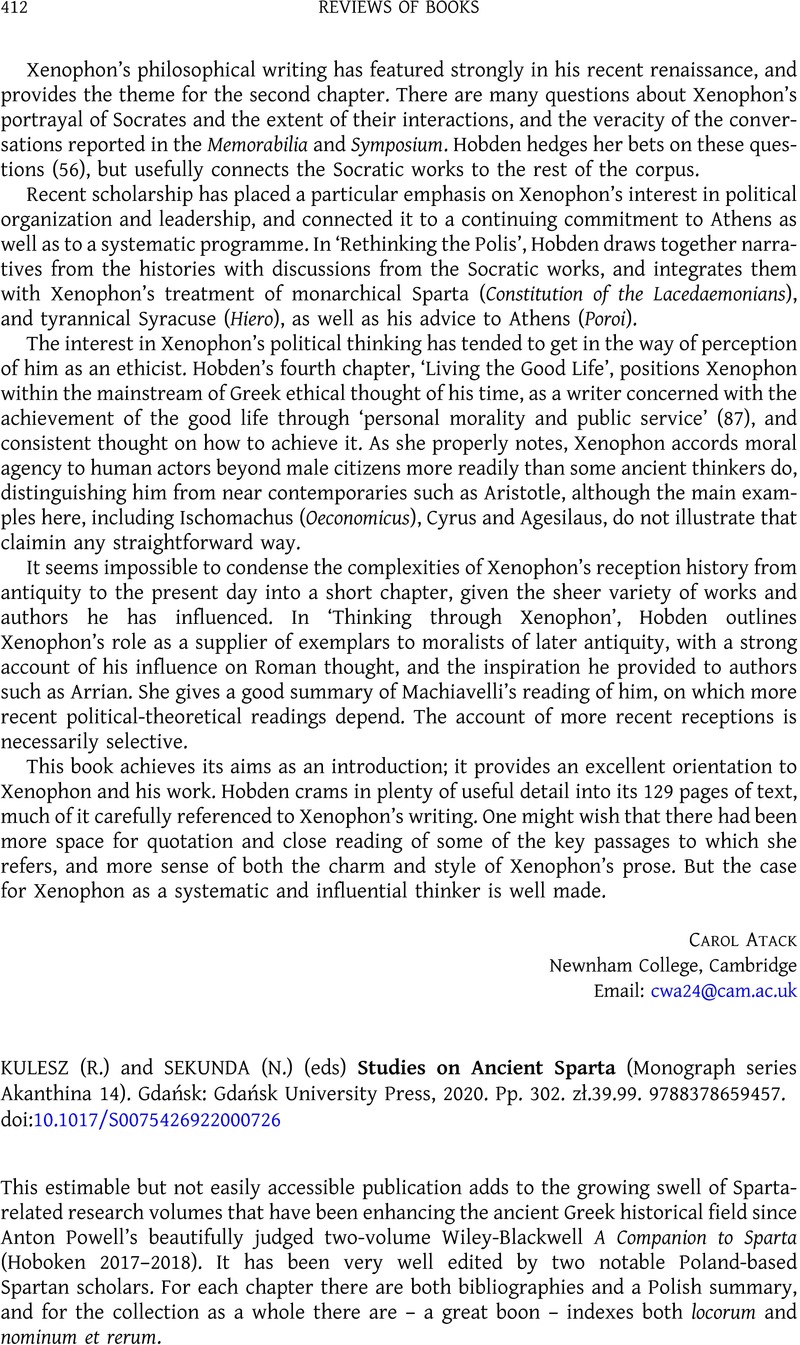No CrossRef data available.
Article contents
(R.) KULESZ and (N.) SEKUNDA (eds) Studies on Ancient Sparta (Monograph series Akanthina 14). Gdańsk: Gdańsk University Press, 2020. Pp. 302. zł.39.99. 9788378659457.
Review products
(R.) KULESZ and (N.) SEKUNDA (eds) Studies on Ancient Sparta (Monograph series Akanthina 14). Gdańsk: Gdańsk University Press, 2020. Pp. 302. zł.39.99. 9788378659457.
Part of:
History
Published online by Cambridge University Press: 11 April 2023
Abstract
An abstract is not available for this content so a preview has been provided. Please use the Get access link above for information on how to access this content.

- Type
- Reviews of Books: History
- Information
- Copyright
- © The Author(s), 2023. Published by Cambridge University Press on behalf of the Society for the Promotion of Hellenic Studies


